Over 200 good and compassionate people walked in spiritual solidarity with Jane Chartrand (Algonquin, Pikwakanagan) and I, Albert Dumont (Algonquin, Kitigan Zibi), on Friday, June 22, 2018. The walk was a special event. I truly believe that the blossoms of reconciliation have a chance of blooming once again at sacred Akikodjiwan because of it. Together, and alive like a moving, pulsing circle, people of non-indigenous bloodlines who trust in faith, spirituality and religion stood with Algonquins to defend the right Indigenous spirituality has to exist.
The sky was blue, Grandfather Sun shone down and touched human skin with his warmth and magnificent energy. The breeze was gentle and at Victoria Island, the birds were singing as we began our walk to Parliament Hill. Gifted orators, clergy from churches and mosques and other guests brought their powerful messages of peace and harmony into the Anishinabe circle. We stood as one, around the drum. June 22nd was a good day to be alive and to be an activist.
I am a man of faith. I believe in a caring, loving and honourable Creator. The spiritual confidence I have in the circle and in the things of my sacred bundle is something I have in common with all my relations who came before me at a time long ago, when only the First Peoples lived on these resource-rich lands.
The ‘Spirituality is Unity’ walk of June 22 was one the Algonquins and their true supporters planned for many months. It was hoped by its organizers that the walk would be supported by many of the people of Indigenous bloodlines who live and thrive on the traditional lands of the Algonquin Anishinabe but whose home communities are from both neighbouring or far away nations. We also called on the region’s faith leaders to walk alongside of us in solidarity with our cause of defending the ancient sacred place of water and rock, beloved by the late Algonquin elder, William Commanda.
A couple of years ago, a troubled young man went into the night and painted swastikas on churches, mosques and temples. The faith leaders of the region at that time gathered in front of cameras and in one voice, condemned the desecration of their holy places. “An attack on one faith,” declared Rabbi Reuven Bulka, “is an attack on all faiths.” And with that the faith leaders promised to do everything possible in protecting all houses of worship from further assaults.
A swastika is what it is. It symbolizes cruelty, hatred, oppression and death. All righteous people emotionally and spiritually cringe at the sight of it. But in this world of dollars and gold, a swastika can come in many shapes and forms. The holy place of the Algonquin Anishinabe, perhaps known to you as Chaudière Falls and its islands, and known to the Anishinabe as Akikodjiwan, is under threat of being forever spiritually lost to us. And lost to everyone, too, as parkland and greenspace. A swastika in the shape of condos and buildings of commerce is being readied for placement at our ancient sacred site.
For the June 22, 2018 walk we called on the faith leaders who, only months ago, boldly stood in front of cameras condemning the desecration of their holy places to join us behind the words, “An attack on one faith is an attack on all faiths.”
Two of the prominent faith leaders we invited declined our invitation. The faith leaders we asked to attend the peaceful walk and to speak on behalf of their religion on Parliament Hill chose, in the end, to not support the ‘Spirituality is Unity’ walk. What does this tell us? What happened to “An attack on one faith”?!! Have these faith leaders been convinced by malicious forces that Indigenous spirituality is not a spirituality after all? Or have they decided, in all their spiritual wisdom, that Akikodjiwan is just not worth standing up for? Do they fear that supporting the walk would be offending a person they regard as a friend or offending a person of wealth?
These leaders need to understand that Indigenous spirituality was here in Algonquin Anishinabe territory for thousands of years before their religion or other faiths ever even arrived on our lands. If any faith or spirituality should be shielded and protected, tooth and claw, from desecration and harm in this country, it should be Indigenous spirituality. Any faith leader who doesn’t see it as such is spiritually warped.
The people of Canada and their governments outlawed Indigenous Spirituality in the past. Today we work to bring it back again in its purest ways, as it was long ago. The faith beliefs of immigrant religions are not greater than are the beliefs found in the circle of Indigenous Spirituality. The faith leaders who did not support the ‘Spirituality is Unity’ walk made a bad mistake (a great sin) in the eyes of Creator. But in this world of dollars and gold such mistakes are made far too often than they should be. And sorrowfully, they are sometimes made by people who should know better. Will they admit it? Time will tell.

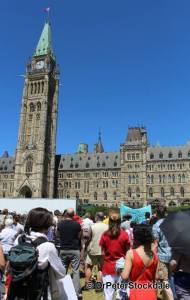
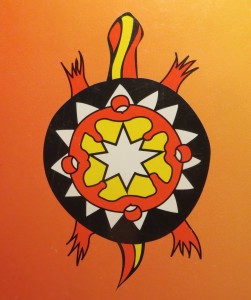
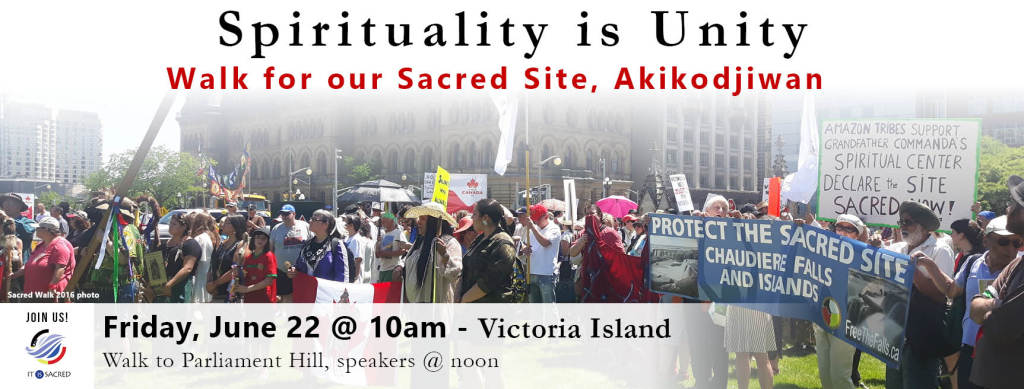
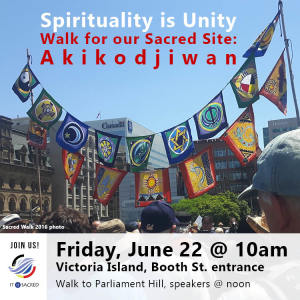
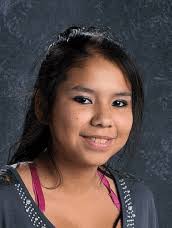
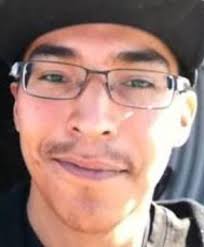

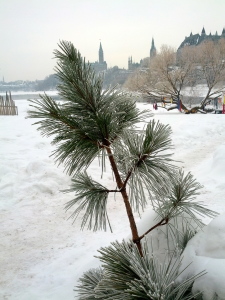
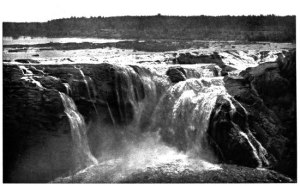
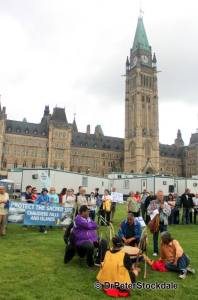
Over 20 years ago, Phil Jenkins wrote An Acre of Time. He extensively researched the history of the Lebreton Flats in Ottawa, near Akikodjiwan (Chaudière). Below is a quote from the book regarding the continued presence of the Algonquin Anishinabe people in the National Capital region. This originally appeared as a comment on January 15th on my blog post, Algonquin Land. It is posted here with Jenkins’ permission.
South Wind
Excerpt from “An Acre of Time”
Because of a petition Constant made to the British department of Indian Affairs in the February of 1830, when he was 44, we know where those hunting grounds were. In the document Constant says,
“That after several years the hunt has more and more diminished with the destruction and the distancing of the beaver and of game. The only means of subsistence of the supplicant whose hunting grounds, situated to the South of the Ottawa at the top of the Rideau, are almost all ruined by the incursions that were made and the numerous settlements that now run along them.”
The expanse of Constant’s family territory can only be guessed at, but the average Algonquin grounds was 100 square miles, or an area ten miles by ten. The “incursions” that Constant mentioned in his petition were the first stirrings of settlement, stirrings that would divide, sub-divide and eventually become Bytown, then Ottawa, the capital city of the British invasion. Constant and his family were to be replaced, in six generations, by half a million people.
Within a couple of months of his petition, Constant got a form letter. It was a fancy-looking document dressed up as a certificate, flourishes and filigreed edges, designed to impress the receiver. It came from Sir James Kempt who was, as it said at the top of the paper, “Captain General and Governor-in-Chief in and over the provinces of Lower and Upper Canada,” as well as of other glories. Sir James wanted Constant to know that he was “reposing especial trust and confidence in your courage and good conduct, and in your zealous and faithful attachment to His Britannic Majesty King George.”
Four years after Constant, together with a Nippissing chief, went to visit James Hughes, an Indian Affairs agent in Montreal. Hughes later reported the meeting to his employers, giving his take on what the two chiefs had on their minds. An edited version of his letter reads,
“Old Constant Pinaisais [French spelling] was here a few days ago. He brought a map made a few years past. These lands on the borders of the Ottawa are now almost all settled.
They however have marked out a lot above the Grand Calumet Portage some distance above the last settlements. They would wish to have a township or a seignorie given to them there, before these lands are granted.
It is on the south side [of the river]. There is an island before it which they would also like to have, to make hay thereon and place their cattle in summer. They say they have no encouragement to work on pieces of land that are in manner only lent to them, whereas were they masters of a certain tract that they could call their own, they would be happy and industrious. They would have it in their power to make better hunts – find more deer and catch plenty of fish.
The history of the British theft of the Algonquin way of living is right there in those few words. No-one goes through life without feeling great change, but Constant Penency found himself pushed over the edge of an era. He was born a free hunter’s son, and by the age of 50 he was asking men born in another world for the right to relinquish any claim on his birthland, and to become a sharecropper and part-time trapper far away from their incursions.